Conformation
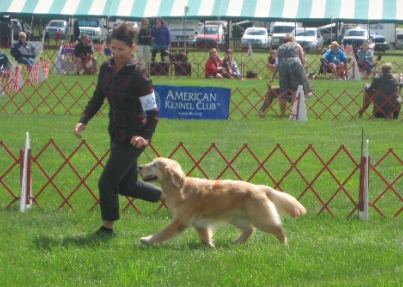
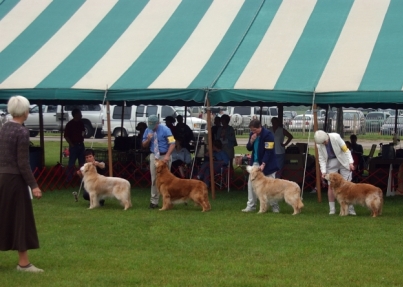
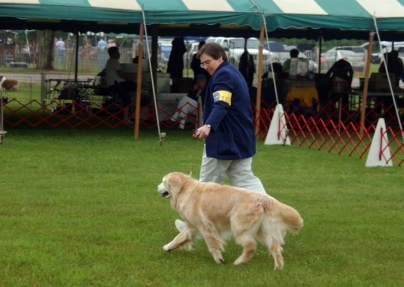
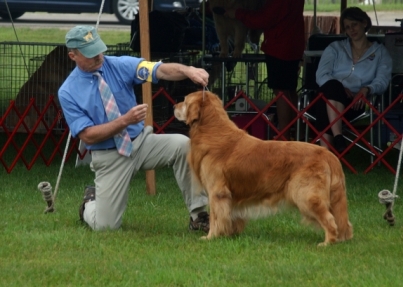
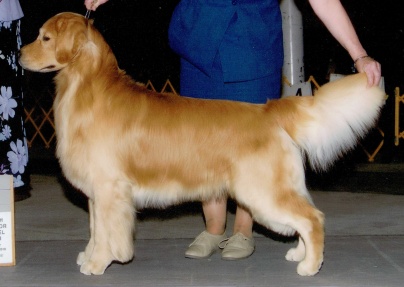
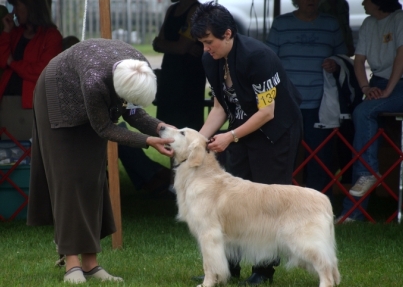
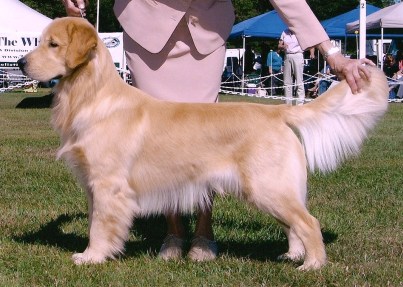
Dog shows promote the continued development of dogs that meet the Golden Retriever standard. Show dogs aren't just pretty faces; the standard dictates that they must be shown in hard working condition. They must meet the breed standard in all areas and have no disqualifying faults.
Yankee Conformation Activities
Yankee hosts an Independent Specialty Show & Obedience Trial and Rally Trial each spring. This event draws in exhibitors from across the country. Specialty Trophy Information
In additon, Yankee often supports the entry of Golden Retrievers at a kennel club show and holds a specialty match. The club usually hosts a GRCA conformation assessment event every other year. Check this year's Events Calendar.
About Dog Shows
A good show dog has received a lot of training in all of the varied show ring procedures. Dogs must learn to be examined by strangers, to ignore the other dogs, and to move around the ring and stand still to show to their best advantage. The best show dogs also have a personality or presence which somehow makes them stand out as "showy."
At a dog show, dogs (males) and bitches (females) compete for the eye of a judge, who chooses the winners at each event. Dog classes and bitch classes are judged separately; all dog classes are judged prior to all bitch classes. Both Winners Dog and Winners Bitch accrue points toward a championship. To become a champion requires at least 15 points, earned under at least three different judges, and two "majors," that is, shows where so many dogs orbitches were defeated that 3 or more points are awarded. The two majors must be under two different judges.
Typically, the judge looks at each dog "stacked" (stood in show position by the handler) to quickly appraise outline, head and type, and then sends all the dogs around the ring together at a trot to watch their collective movement. Then the judge evaluates each entry individually, checking for the correct scissors bite and complete dentition, proper head shape, correct dark eyes and nose pigment, ear set and size, a sturdy, medium long neck, shoulder angulation and layback, length of upper arm, depth of chest, width of chest and amount of forechest, correct rib spring, topline, rear angulation, correct tail-set, correct pasterns and feet, correct length of tail, proper coat, etc. After physically going over the dog, the judge watches the dog move in a designated pattern to determine the gait of the dog "coming and going" (front and rear leg action) and the side gait, where "reach and drive" can be determined. The temperament, structure, movement, and overall balance of the dog are clearly delineated in the standard, and each dog is judged against the breed standard, not against the other dogs in the ring. Overall appearance, balance, gait, and purpose are given more emphasis than any single component. Once all the entries have been examined and gaited, the judge selects the top four placements, based on which dogs most nearly approximate the Golden Retriever standard in all aspects.
This procedure is followed in all of the different classes for dogs and bitches. The winners of each of the classes then enter the ring to vie for "Winners Dog" and "Winners Bitch," selected in the same manner as the winners of the classes. The winners are each awarded 1-5 points toward a championship, based upon the number of dogs defeated that day. Both Winners Dog and Winners Bitch then enter the ring with the "finished" Champions being shown and all compete for "Best of Breed." Again, this award is presented to the dog closest to the judge's interpretation of the standard, only this time the sexes are judged together. Once Best of Breed has been determined, the judge selects the "Best of Opposite Sex," awarded to the dog which most closely meets the standard but is not of the same sex as the Best of Breed. Finally, the judge selects the "Best of Winners," either the Winners Dog or the Winners Bitch.
There may be special prizes for these three wins, but only the Best of Breed may go on to compete against other breeds for Group placements and Best in Show. Group placements accrue points toward achieving recognition in the Golden Retriever Club of America Show Dog Hall of Fame.
At a match, dogs compete but are not awarded points towards their championships. Typically, matches are where breeders and owners begin showing puppies before they are old enough to compete in AKC sanctioned dog shows.
Resources


